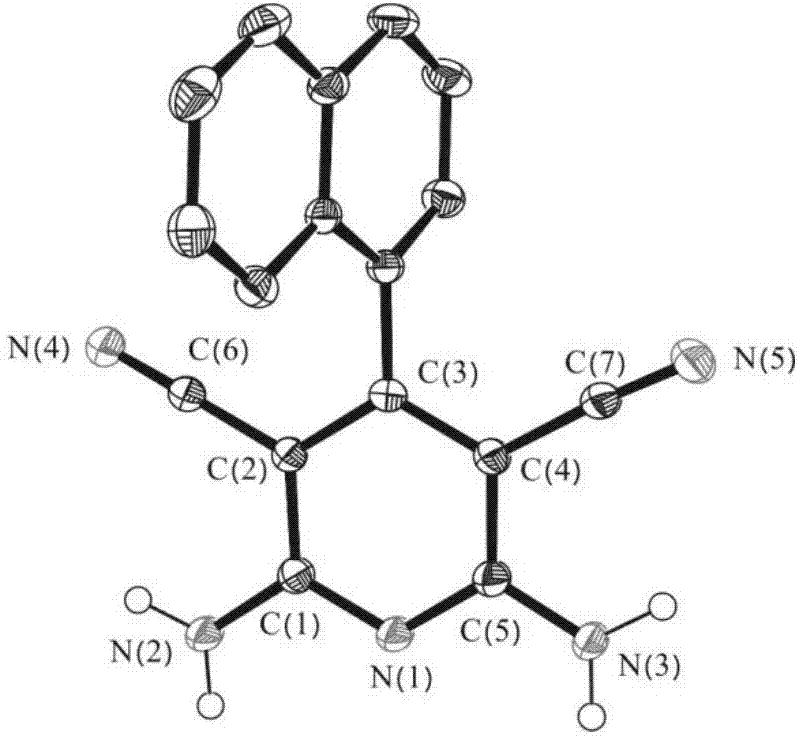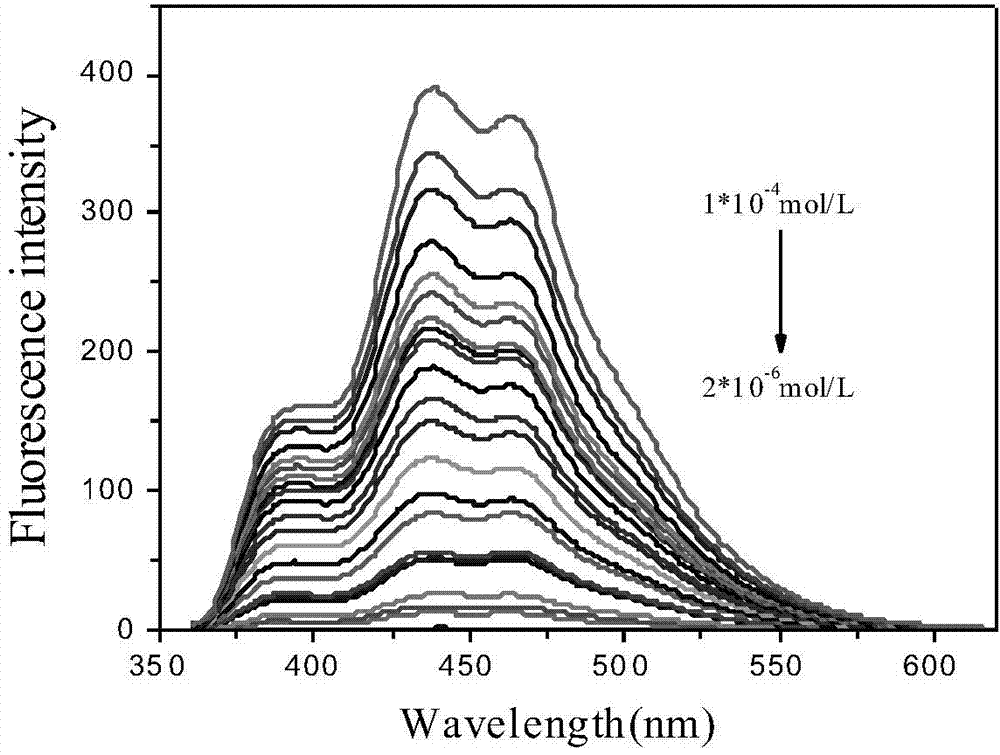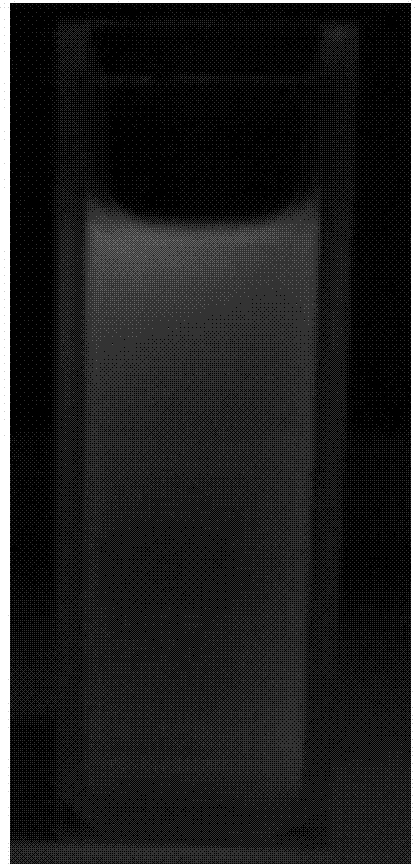Gold ion fluorescent probe based on o-aminopyridine nitrile compound and preparation method thereof
A technology of o-aminopyridine nitrile and fluorescent probe, which is applied in the field of symmetrical o-aminopyridine nitrile compound fluorescent probe and preparation thereof, can solve the problems of complicated steps and high cost, and achieve the effect of high detection sensitivity
- Summary
- Abstract
- Description
- Claims
- Application Information
AI Technical Summary
Problems solved by technology
Method used
Image
Examples
preparation example Construction
[0022] The preparation of example example 1 gold ion fluorescent probe
[0023] Add 20ml of ethanol and 10ml of water into a 100ml round bottom flask, add 10mmol of naphthalene formaldehyde, 20mmol of malononitrile, and 15mmol of concentrated ammonia water under stirring. The mixture is heated and stirred at 50°C for 5 hours with magnetic stirring at room temperature. After the reaction was completed, it was directly filtered to obtain a solid crude product. Recrystallized from THF and acetone,
[0024] White crystals (I) were obtained, and the single crystal structure of compound I was as follows figure 1 , the yield is about 75% (mother liquor recovery), m.p.>300°C. The synthetic route of naphthyl formaldehyde and malononitrile, ammoniacal liquor is:
[0025]
[0026] The spectral characterization data of product (I) is: 1 H NMR (400MHz, DMSO-d 6 )δ:8.05-8.10(3H,m,Ar-H),7.59-7.67(4H,m,Ar-H),7.33(4H,s,NH 2 ); 13 C NMR (100MHz, DMSO-d 6 ),(ppm):160.8(2C),158.9,133,1...
Embodiment 3
[0029] Example 3 Fluorescent probes for quantitative fluorescence detection of gold ions
[0030] Add 10uL of fluorescent probe stock solution and 0-100uL of gold ion aqueous solution to different 10mL colorimetric tubes (the concentration of gold ion stock solution is 1*10 -2mol / L) and make up to 10 mL with deionized water. The concentration of fluorescent probe after constant volume is 1*10 -5 mol / L, gold ion concentration is 2*10 -7 mol / L*10 -4 mol / L. Transfer 3 mL of the working solution to a 1 cm fluorescence cuvette to record the fluorescence spectrum and record the fluorescence intensity at 446 nm. Drawing the relationship between the change of fluorescence intensity and the concentration of gold ions, the concentration of gold ions can be quantitatively detected according to the change trend of fluorescence intensity, and the detection limit of gold ions is 39.4ug / ml. The fluorescence spectrum as a function of gold ion concentration is as follows Figure 4 shown....
Embodiment 4
[0031] Example 4 Interference experiment of other metal ions on the detection of gold ions by fluorescent probes
[0032] Add 10uL of fluorescent probe stock solution to different 10mL colorimetric tubes, the concentration of 100uL is 1*10 -2 mol / L of other interfering metal ions Au 3+ , Cu 2+ , Al 3+ , Zn 2+ , Pb 2+ , Ag + , Cu + , Hg 2+ , Ni 2+ , Ca 2+ , Cd 2+ , Co 2+ , Fe 2+ , Mn 2+ , Mg 2+ , Na + , K + Aqueous solution, then add 100ul respectively to the concentration of 1*10 -2 mol / L gold ion aqueous solution, and make up to 10 mL with deionized water. The concentration of fluorescent probe after constant volume is 1*10 -5 mol / L, the concentration of gold ions and other metal ions is 1*10 -4 mol / L. Transfer 3 mL of the working solution to a 1 cm fluorescence cuvette to record the fluorescence spectrum. The excitation and emission wavelengths are 334 nm and 446 nm, respectively. The recorded fluorescence intensity is plotted against different metal ion...
PUM
 Login to View More
Login to View More Abstract
Description
Claims
Application Information
 Login to View More
Login to View More - R&D
- Intellectual Property
- Life Sciences
- Materials
- Tech Scout
- Unparalleled Data Quality
- Higher Quality Content
- 60% Fewer Hallucinations
Browse by: Latest US Patents, China's latest patents, Technical Efficacy Thesaurus, Application Domain, Technology Topic, Popular Technical Reports.
© 2025 PatSnap. All rights reserved.Legal|Privacy policy|Modern Slavery Act Transparency Statement|Sitemap|About US| Contact US: help@patsnap.com



